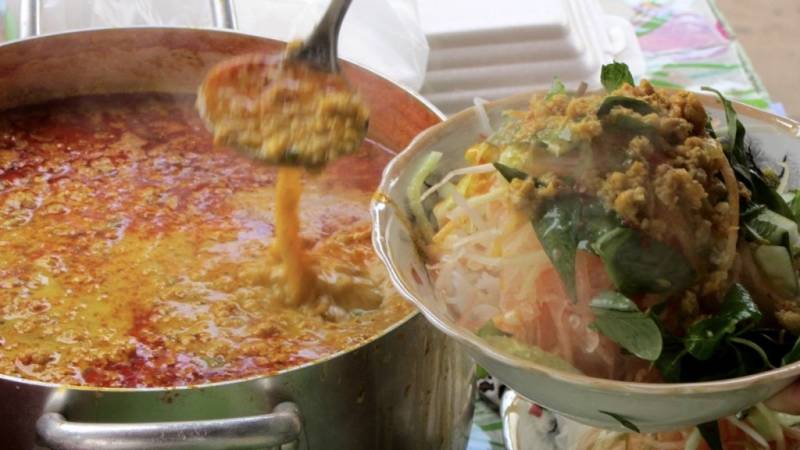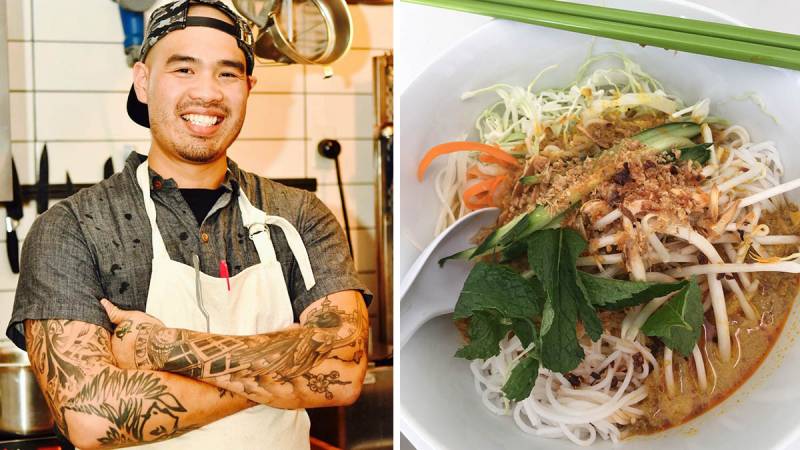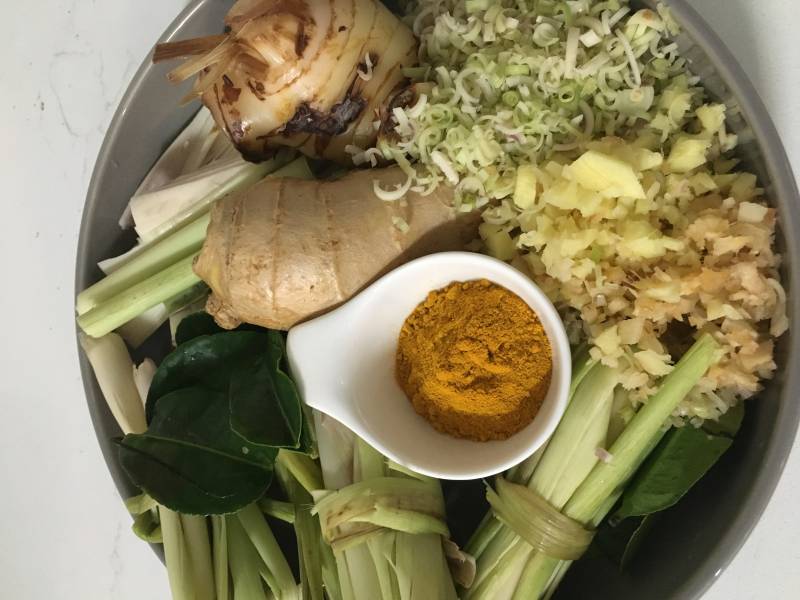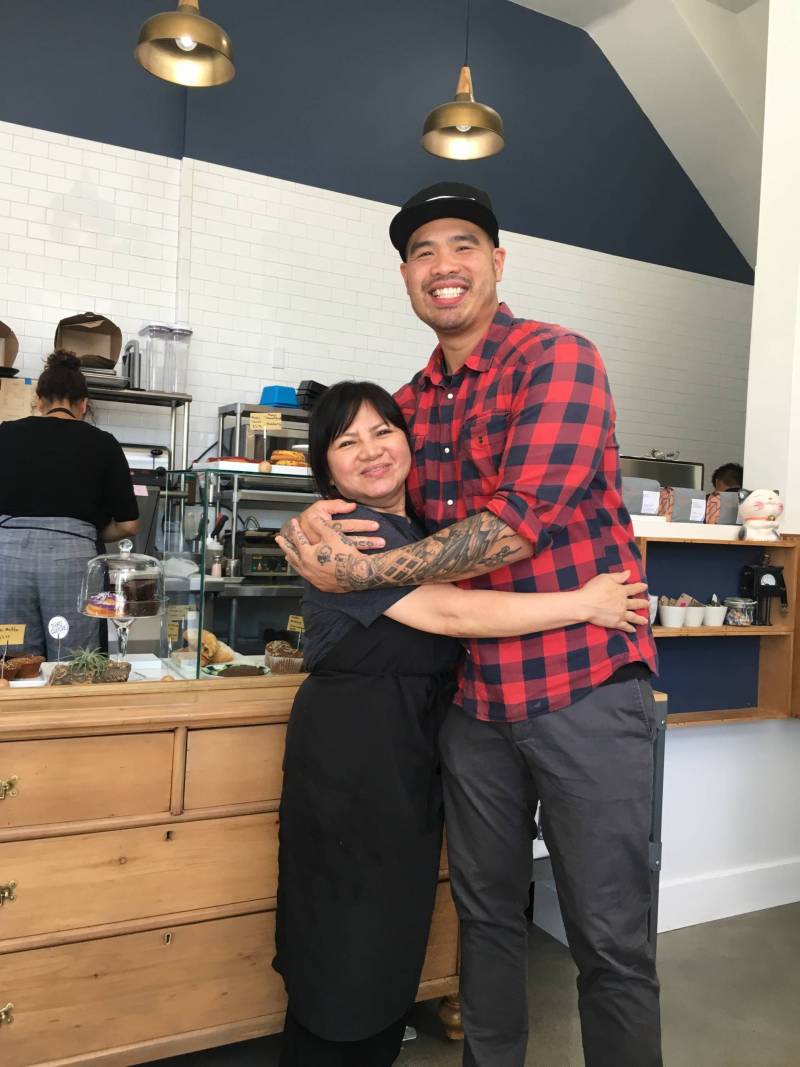Bún kèn is one of the most treasured Vietnamese noodle dishes. The aromatic assemblage of rice noodles topped with an amber-colored, heavily spiced, coconut fish curry, garnished with fresh herbs like bean sprouts, mint and cucumber, is not easy to find in Bay Area Vietnamese restaurants. Even if you travelled to Vietnam, you might miss it—unless you knew the right street vendor on the island of Phú Quốc. Chef Tu David Phu, a Bay Area chef who also appeared on Bravo's Top Chef, whose family hails from Phú Quốc, reverently declares he could eat bowls and bowls of it. Fish and spices, the essential elements of the dish, he explains, have always played pivotal roles on this island in the Mekong Delta, southwest of Vietnam. Its position on the Silk Road, bestowed on its cuisine an abundance of ingredients from many lands, such as lemon grass from Africa, and turmeric, ginger, and coriander from South Asia.

Although his mother cooked the dish when Phu was a child, he figures he hadn’t yet developed the palate to appreciate its assertive flavors. The first time he actually recalls tasting bún kèn was just a couple of years ago, at a gathering of local Phú Quốc islanders. “It had somehow got pushed out of my memory,” he says. “But it tasted familiar and something in me woke up.” Because of its strong spice profile, Phu, who is also a San Francisco Chronicle Rising Star Chef, admits he mistakenly first pegged it as Indonesian.


